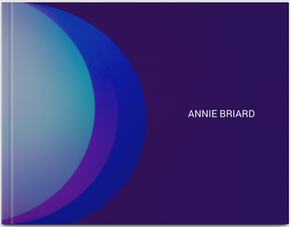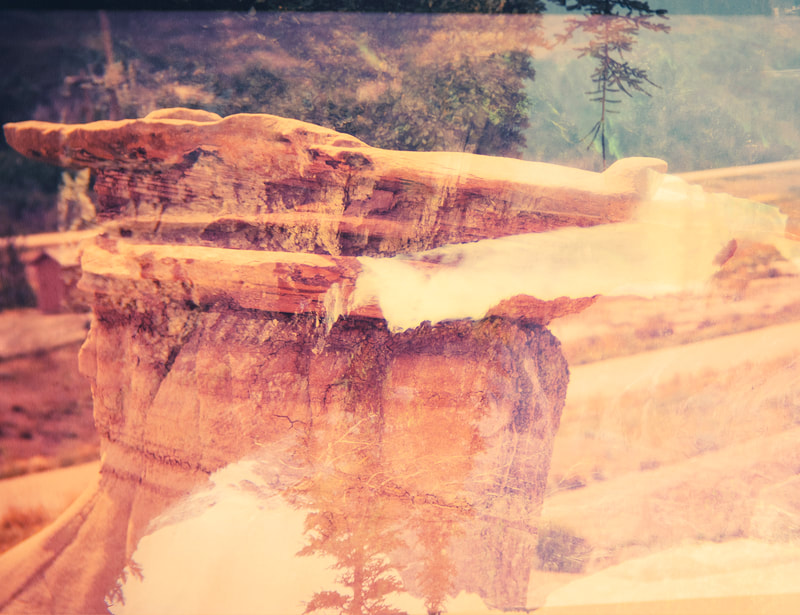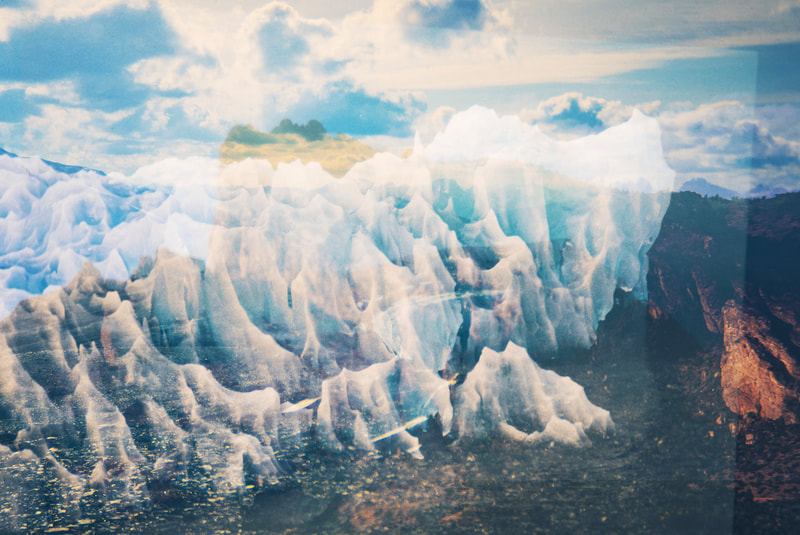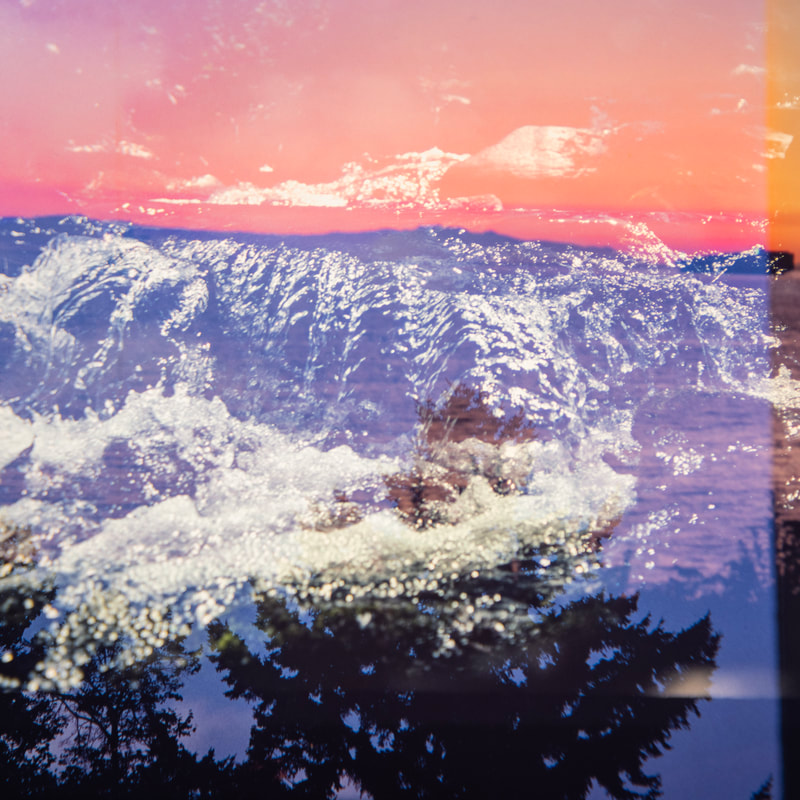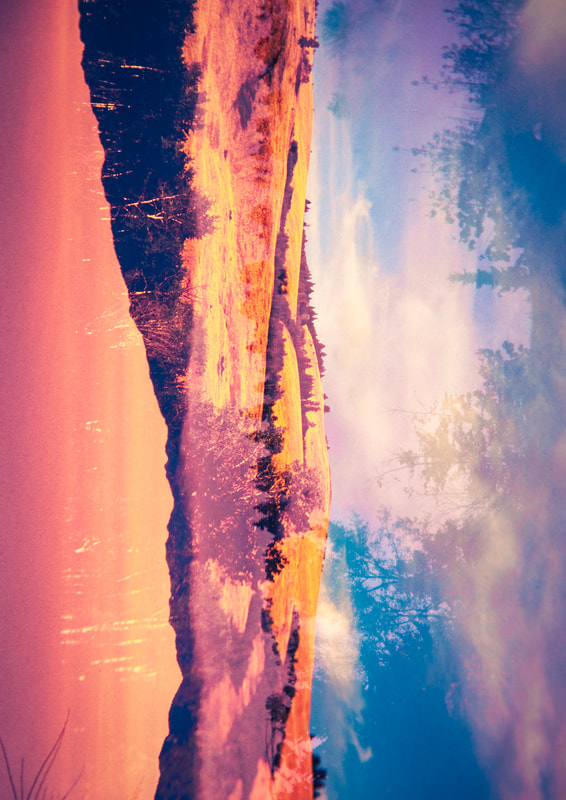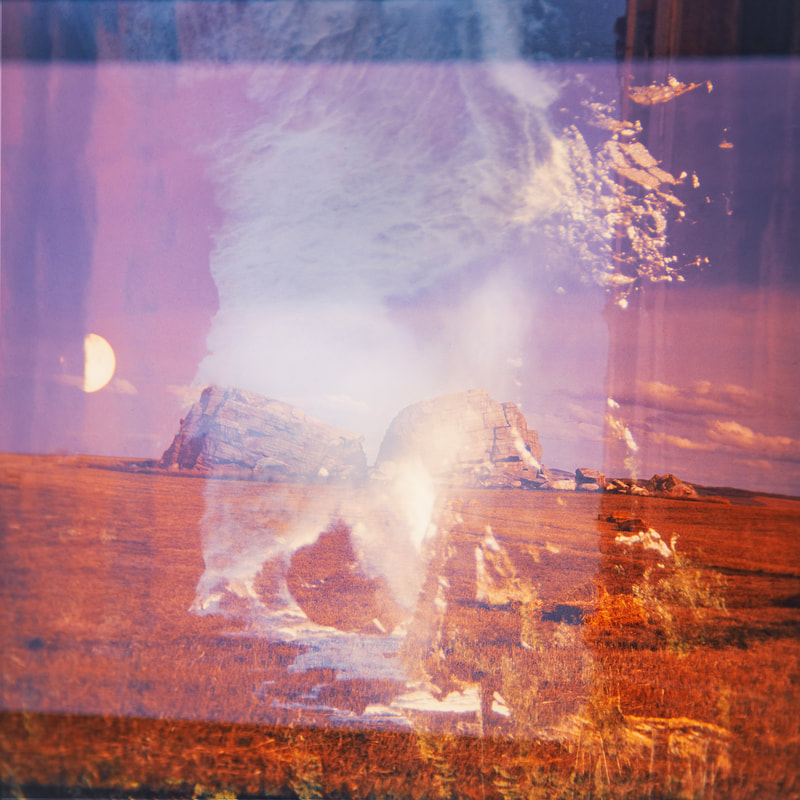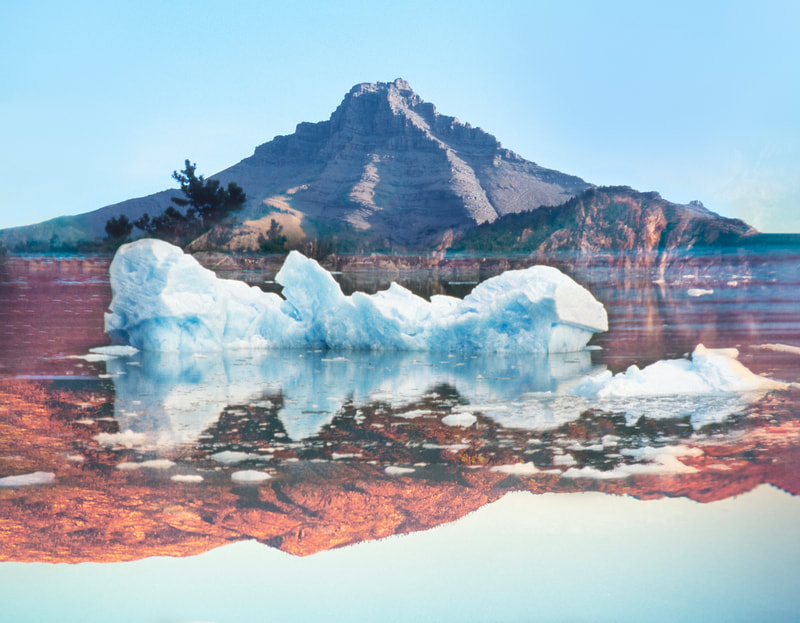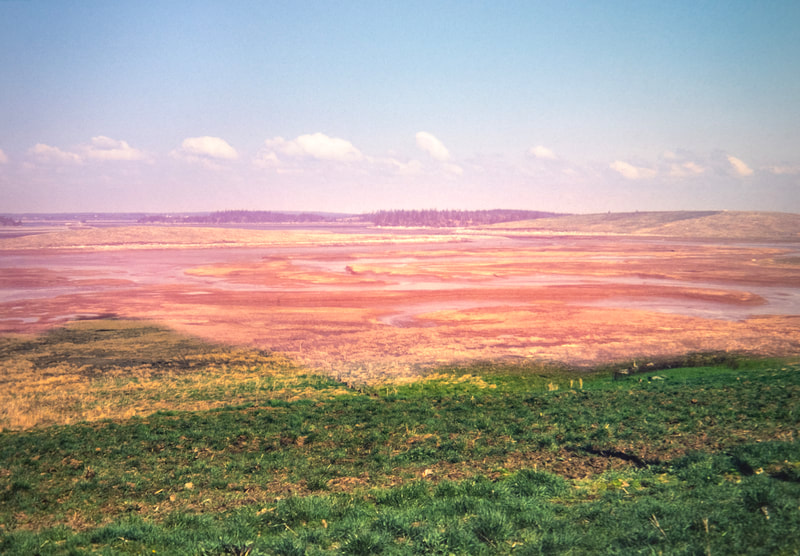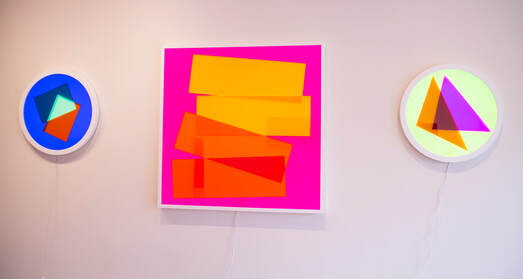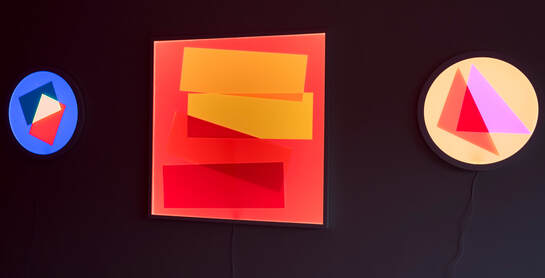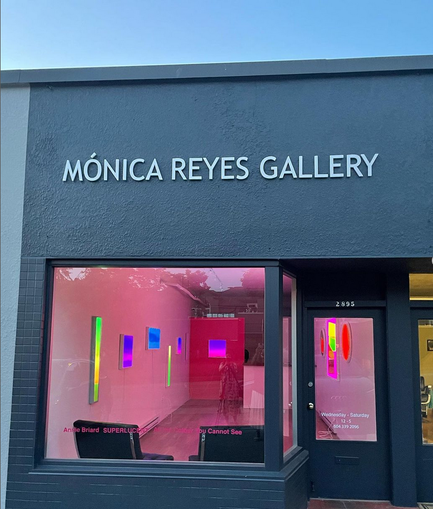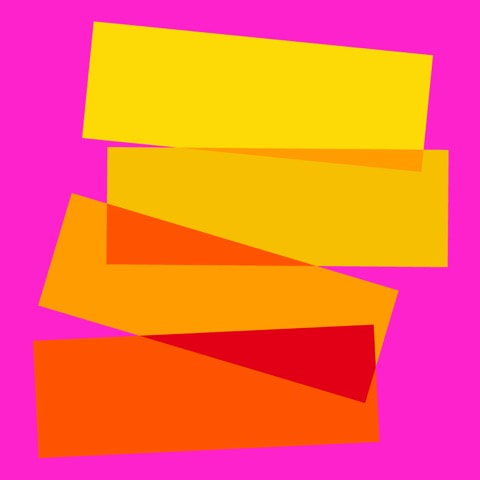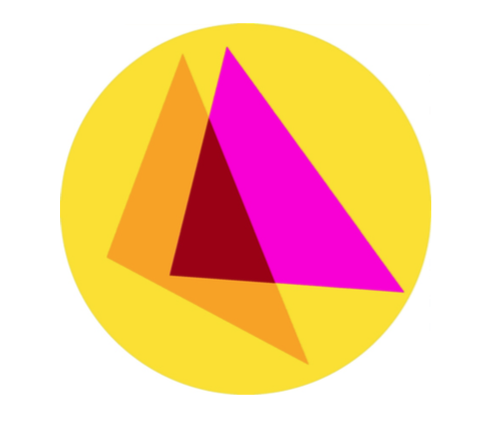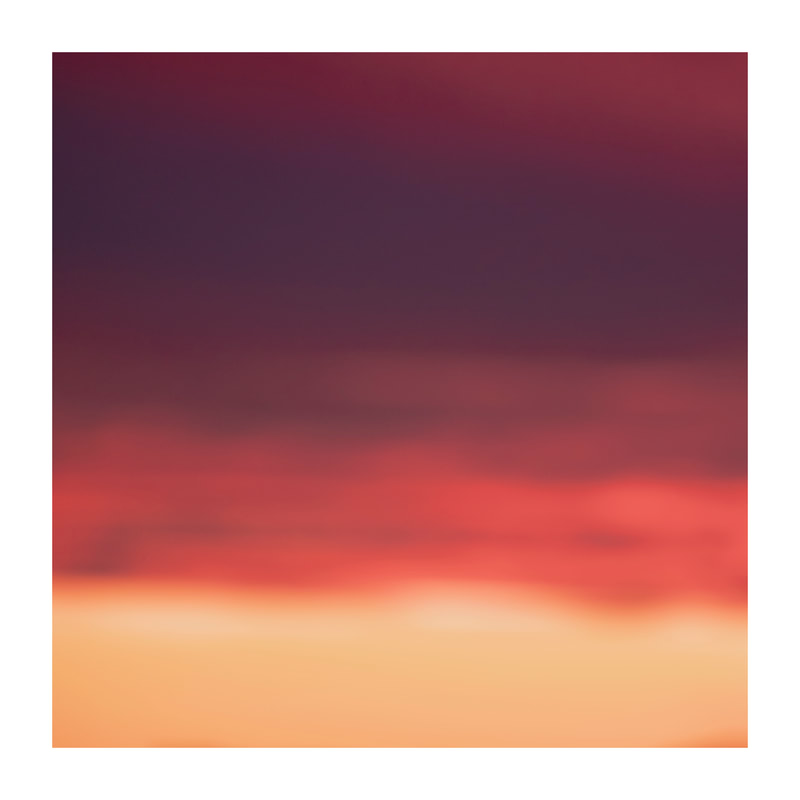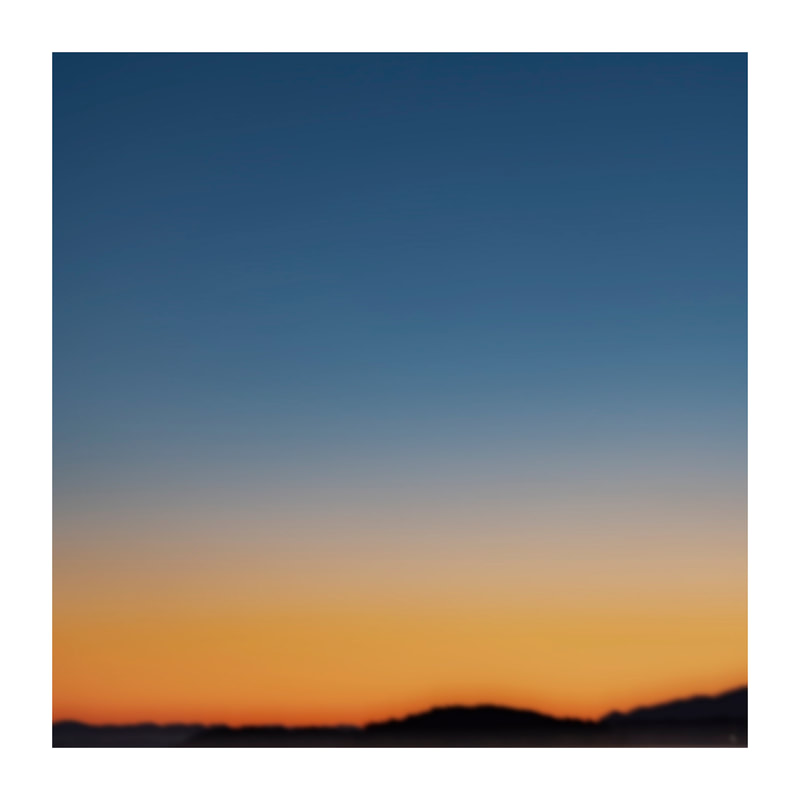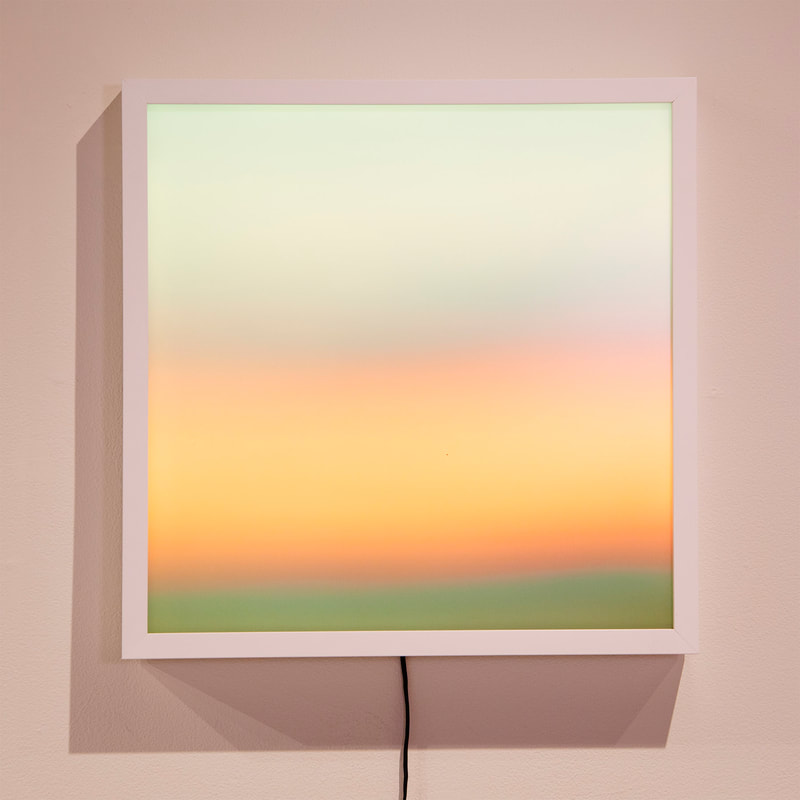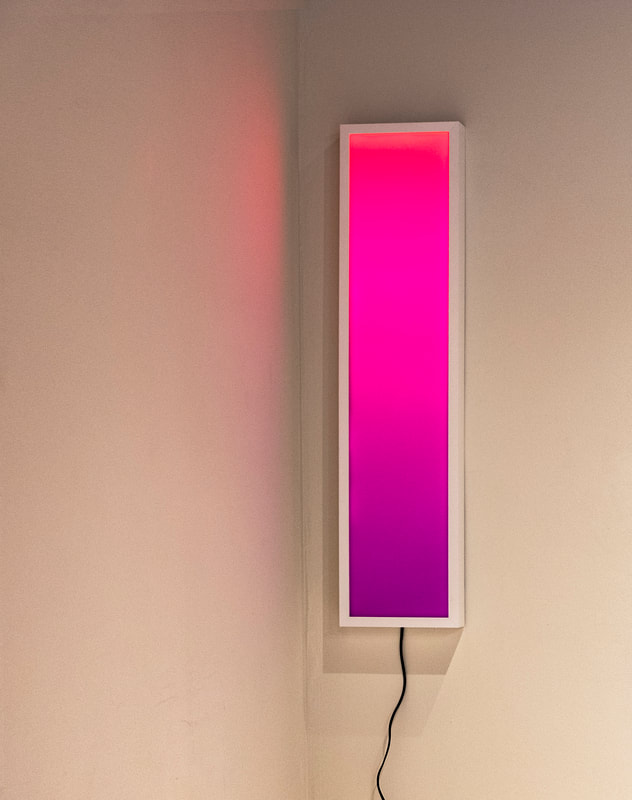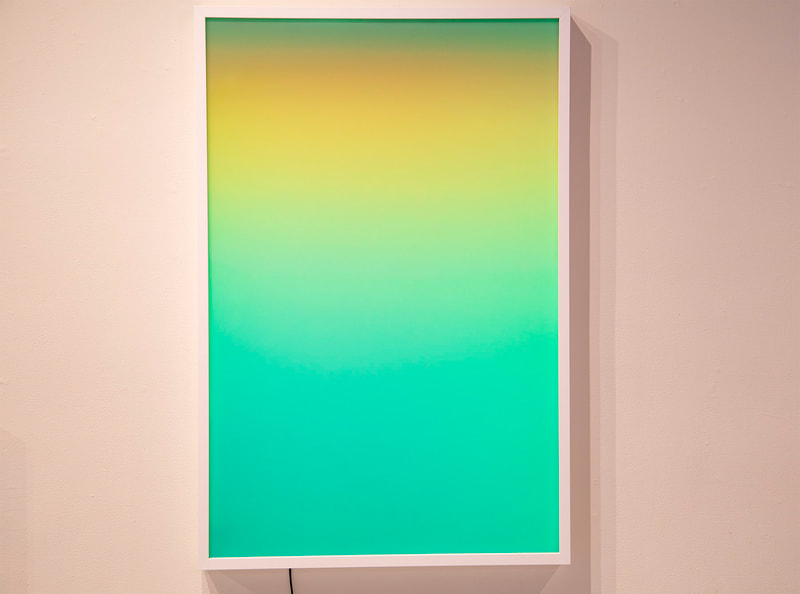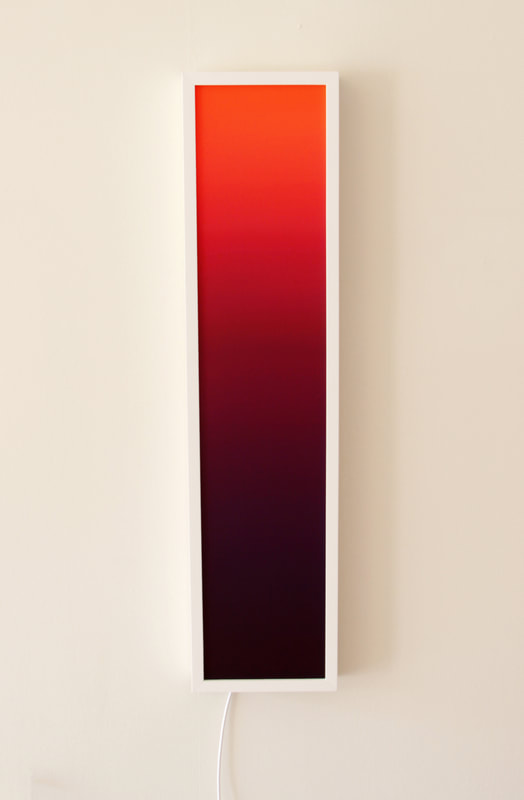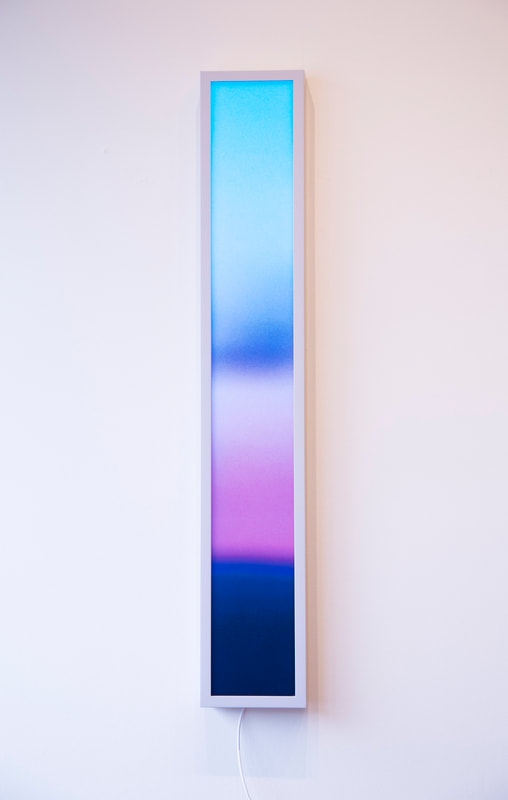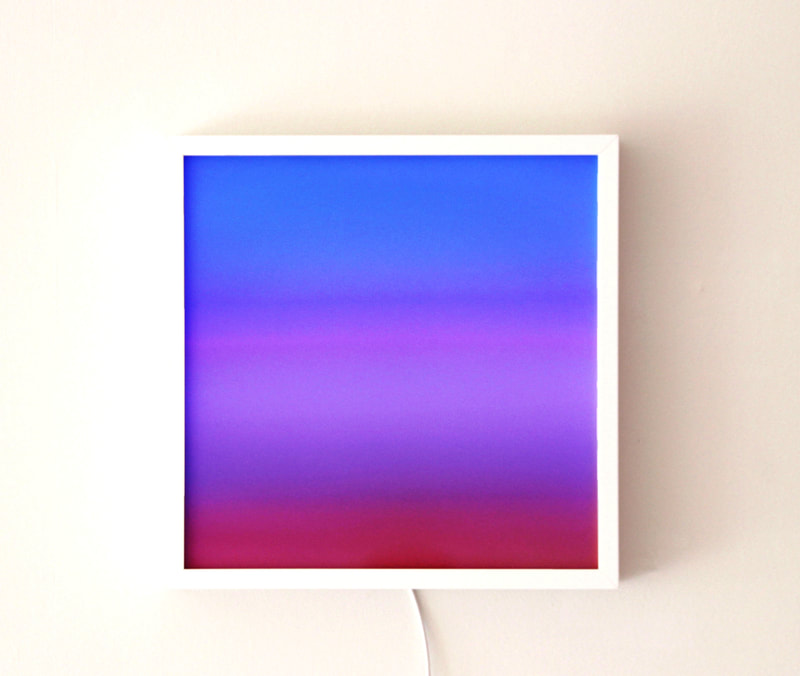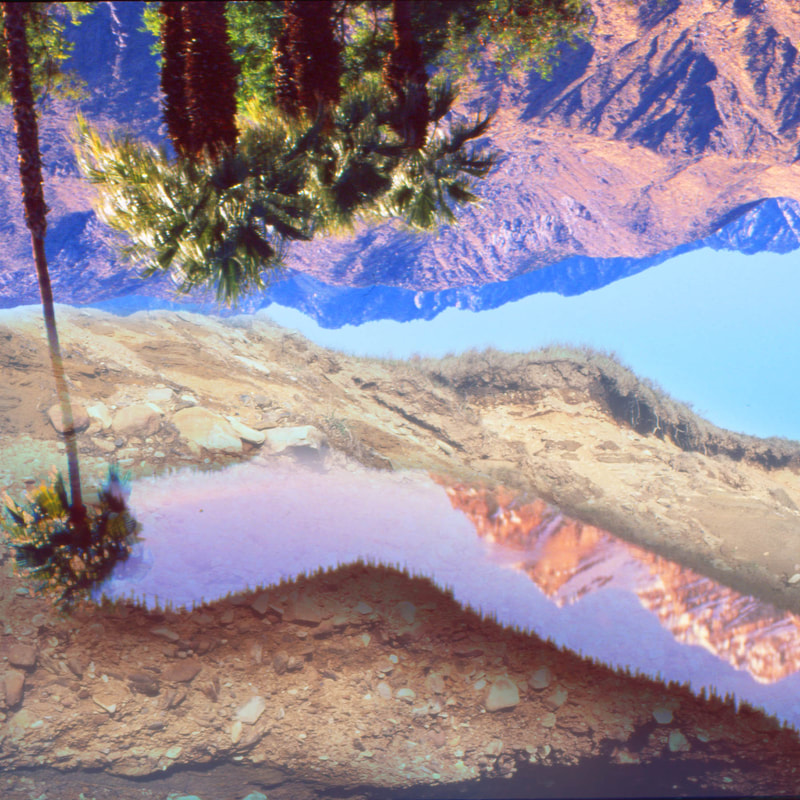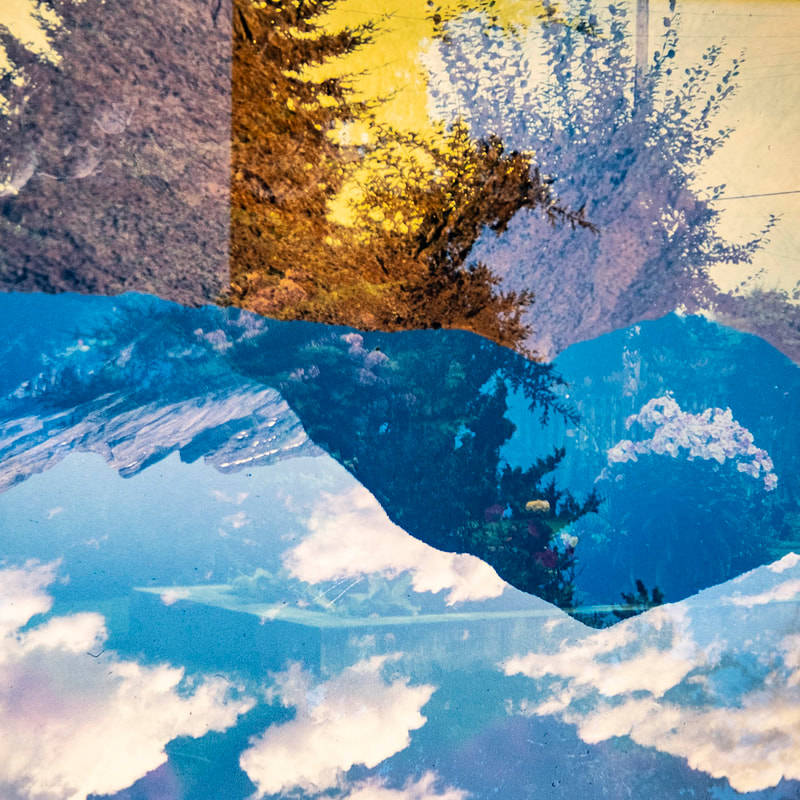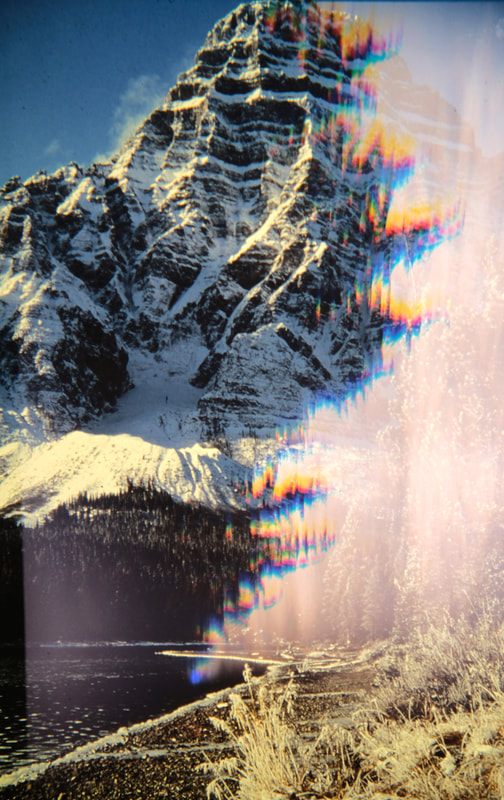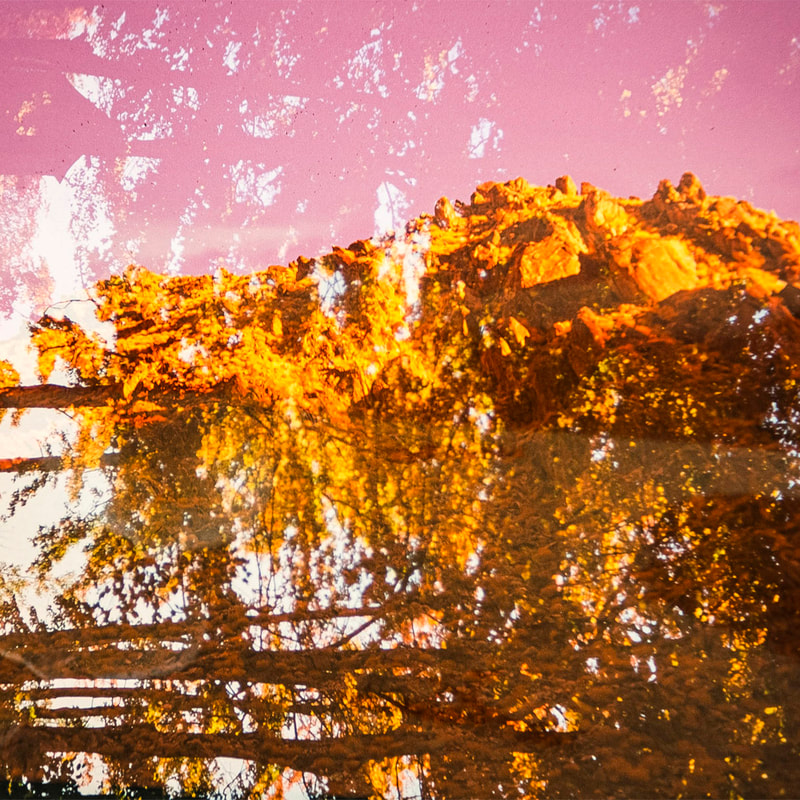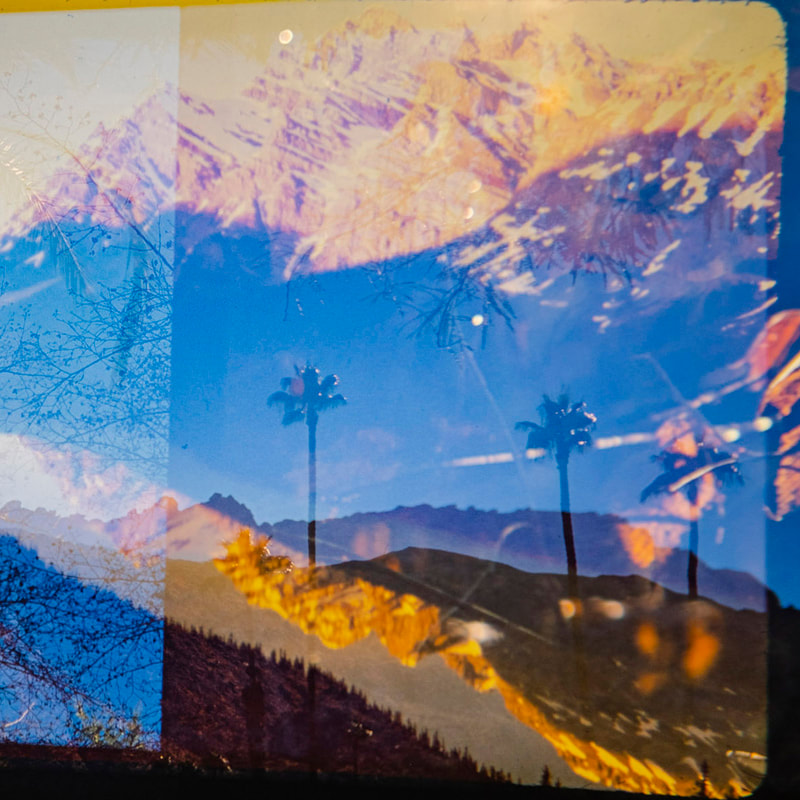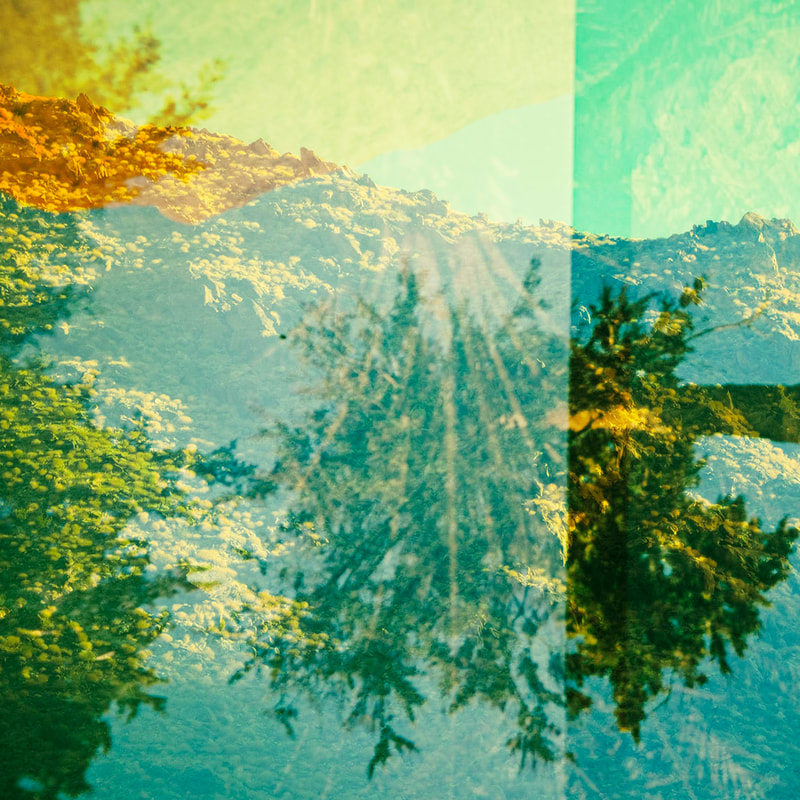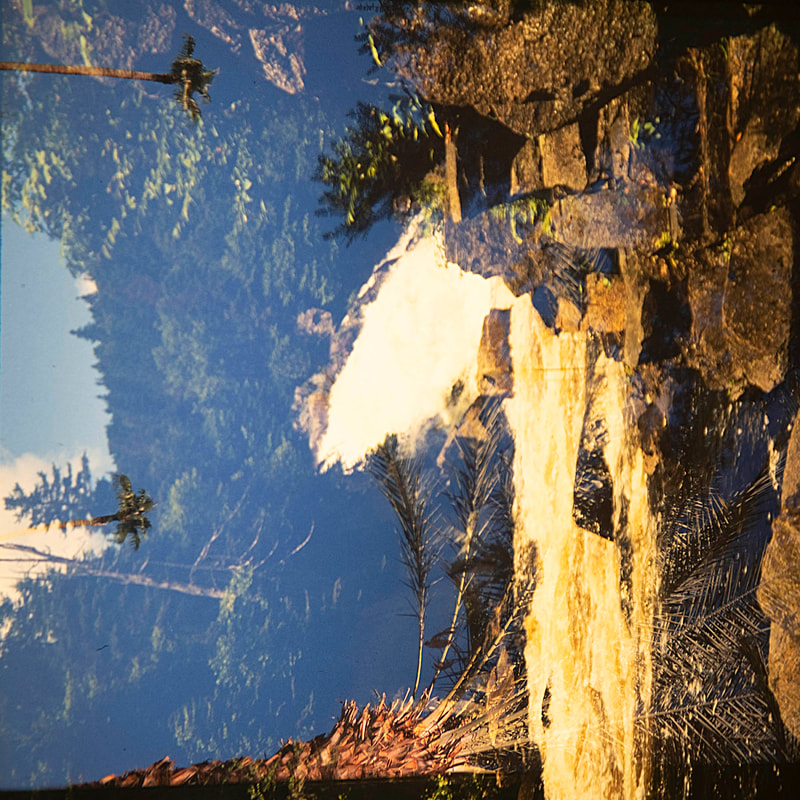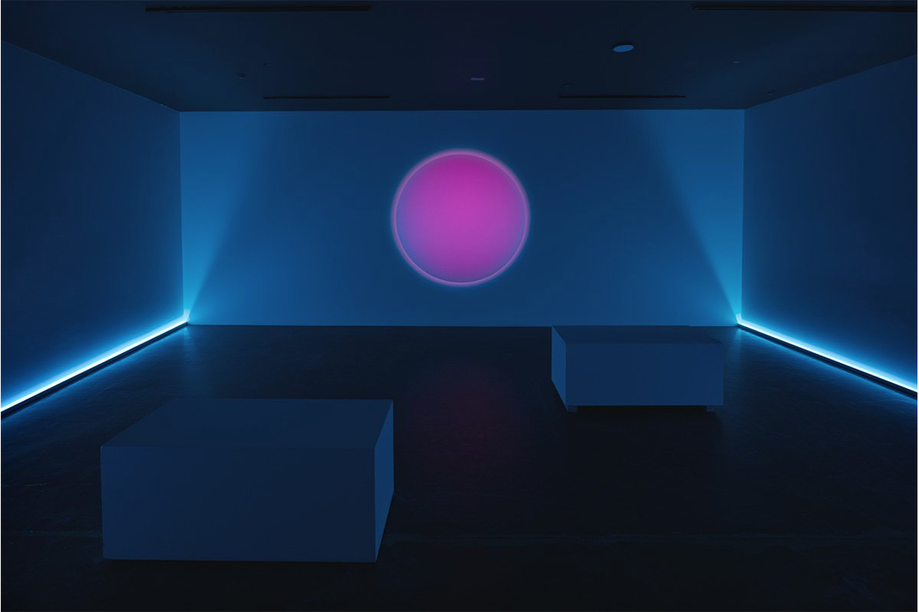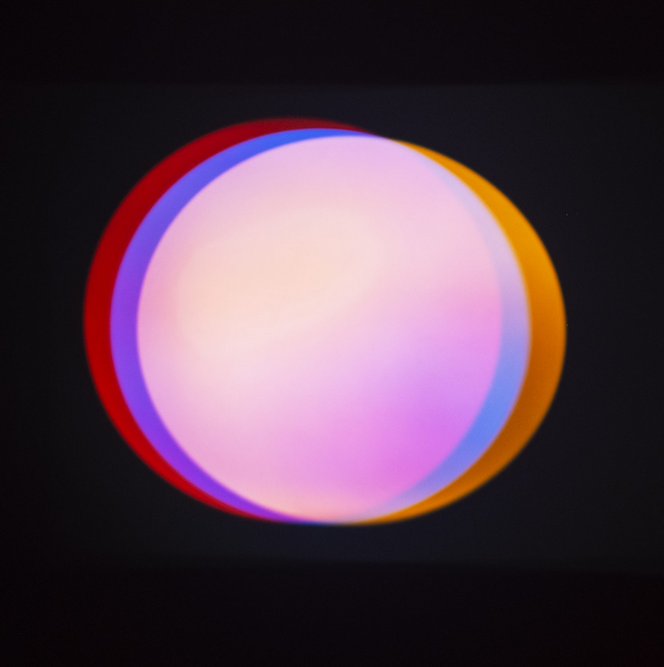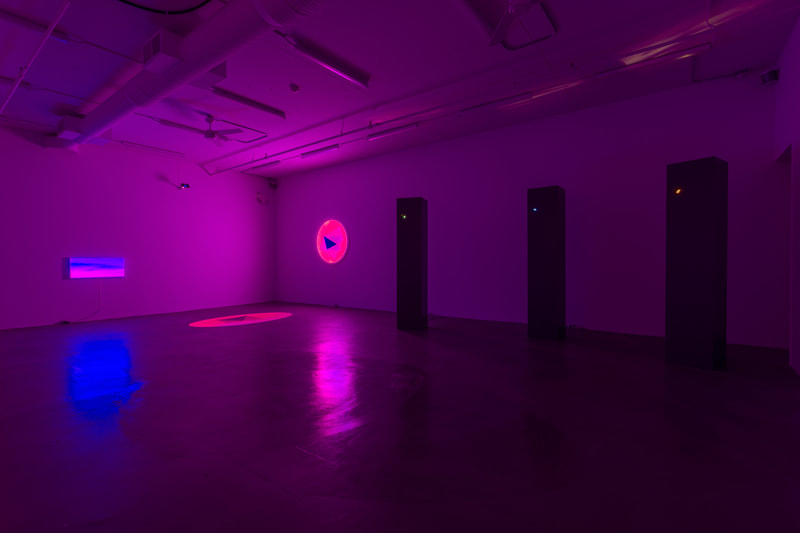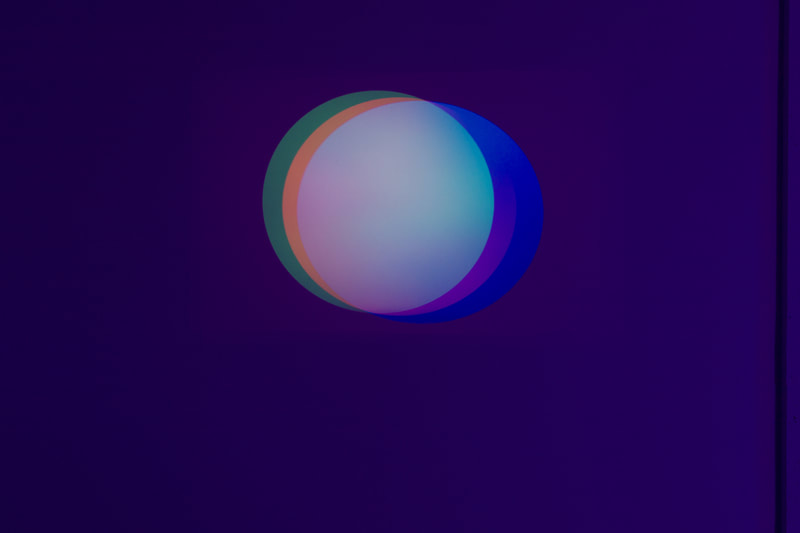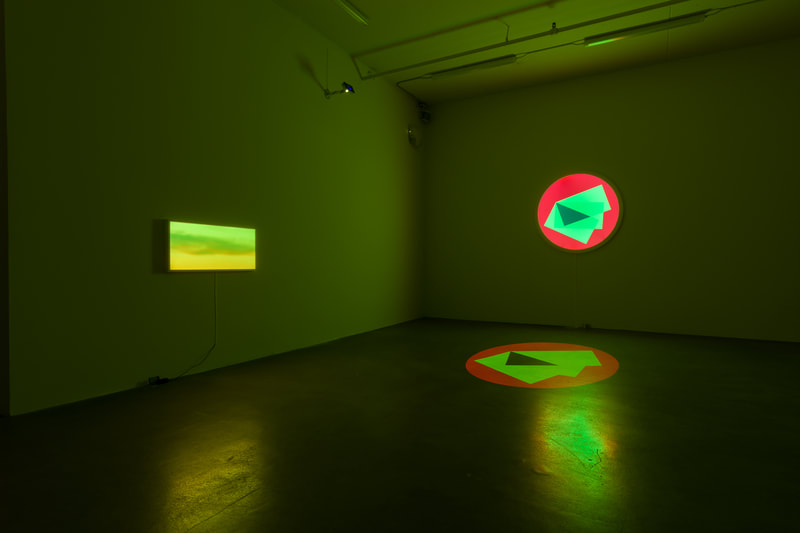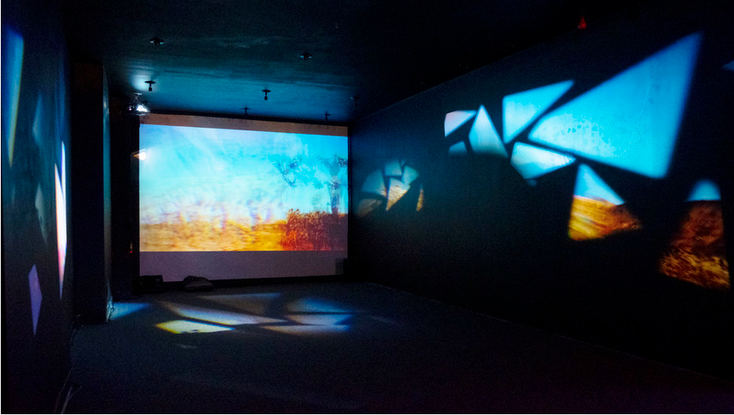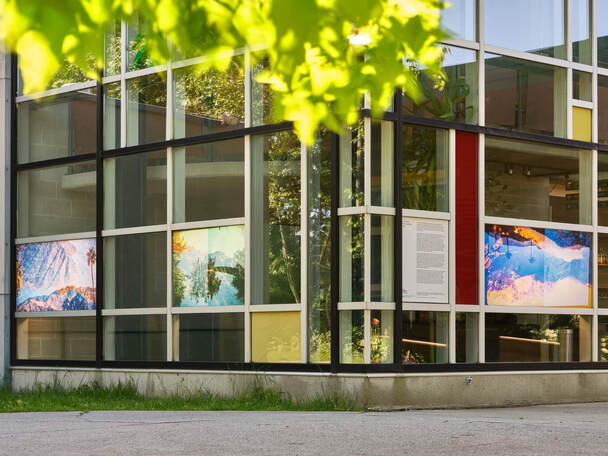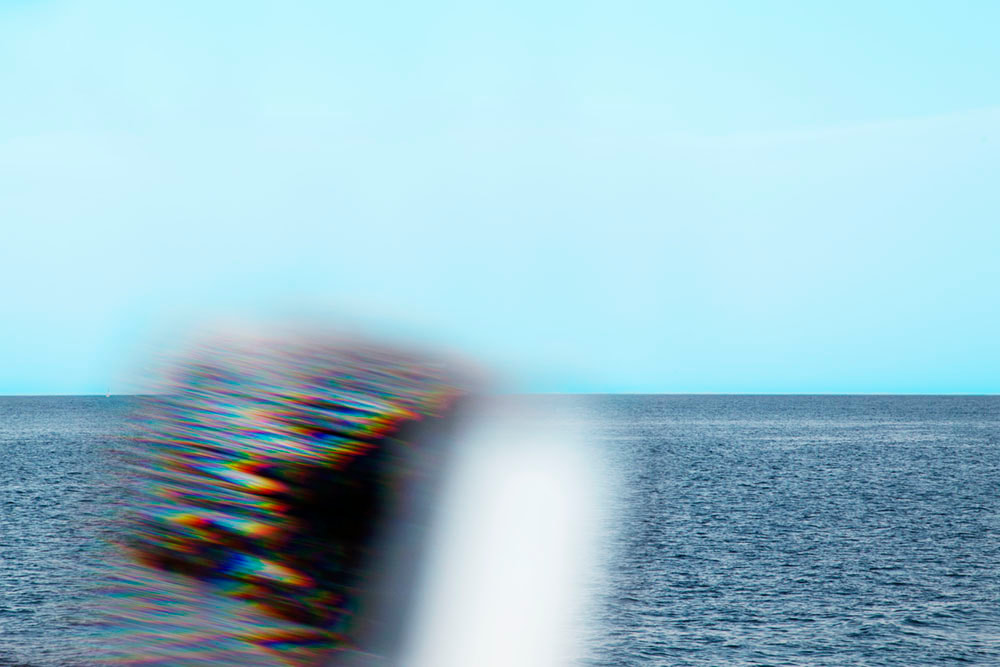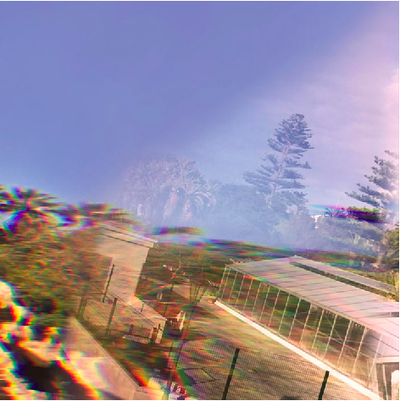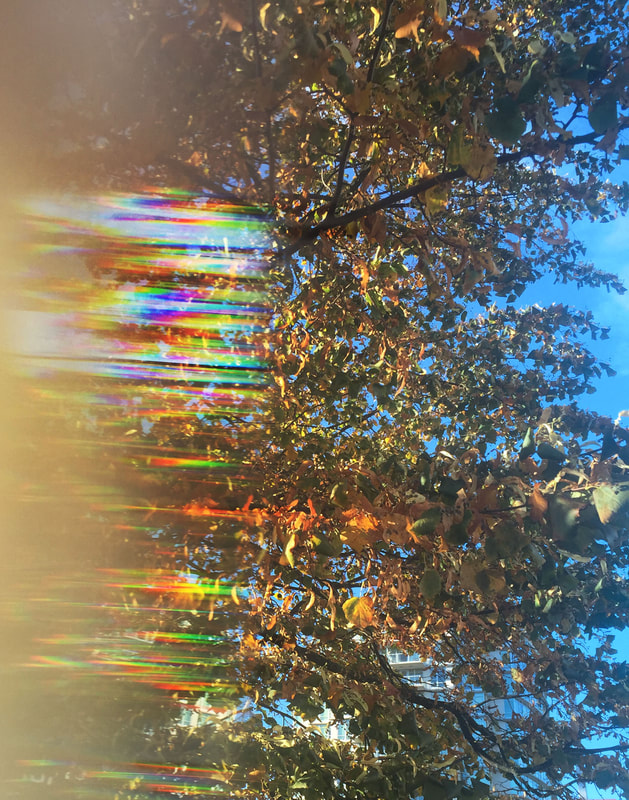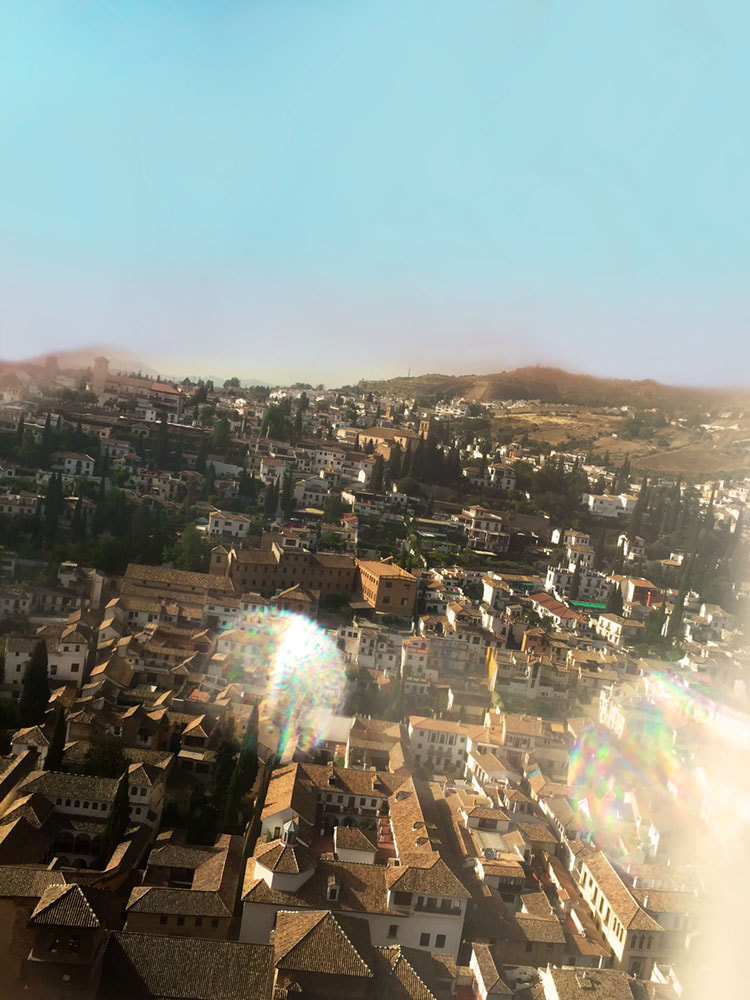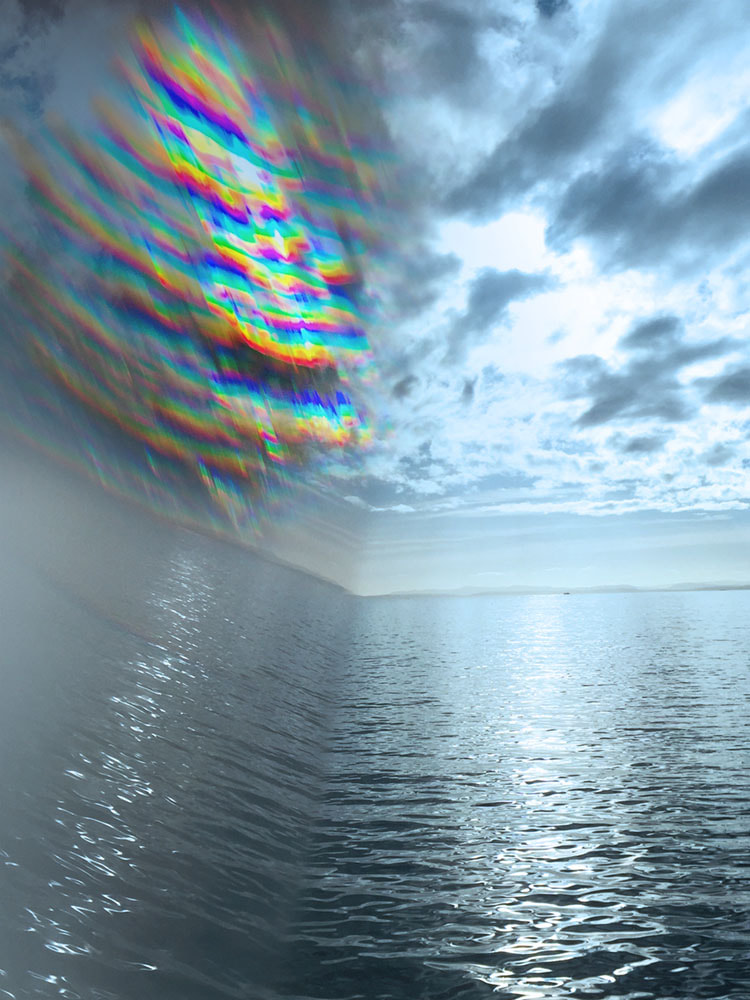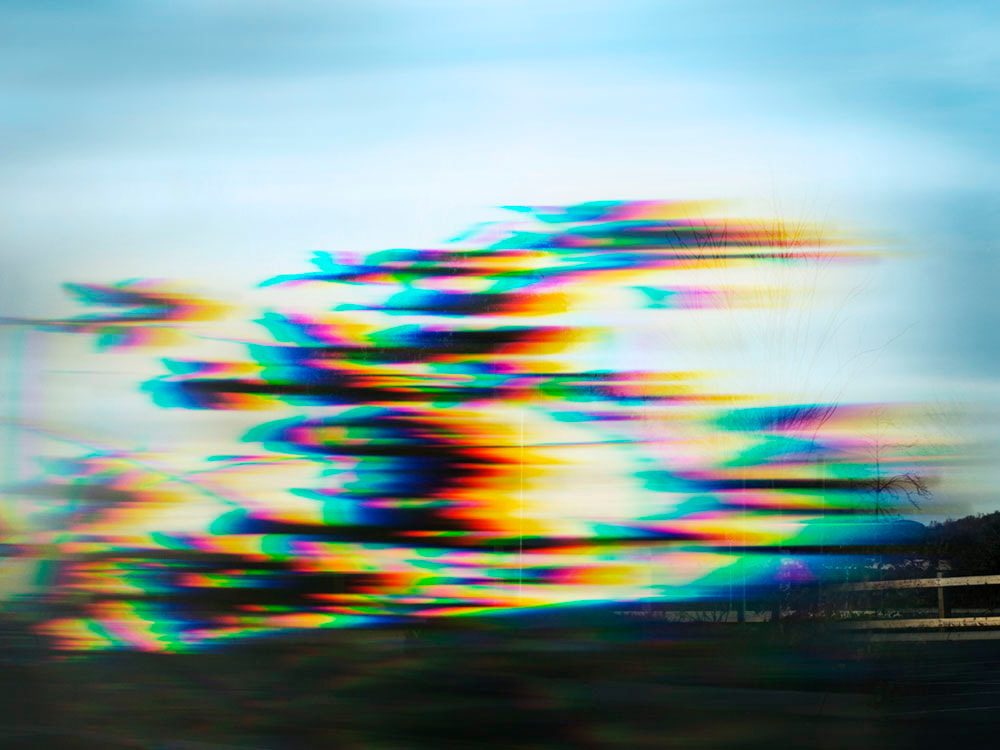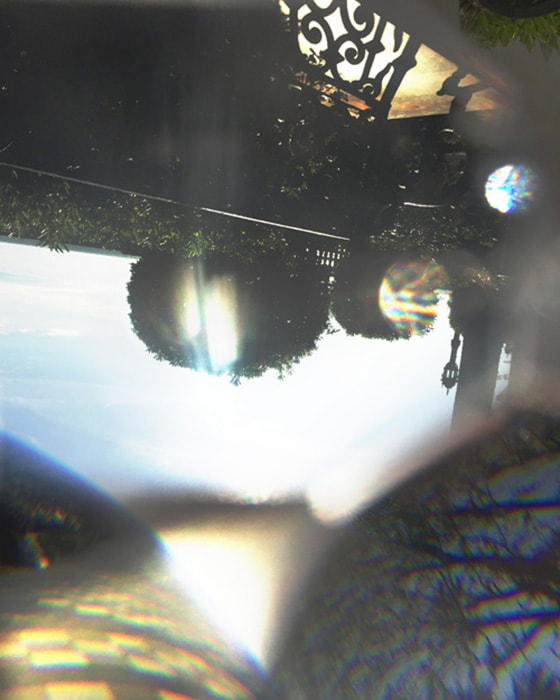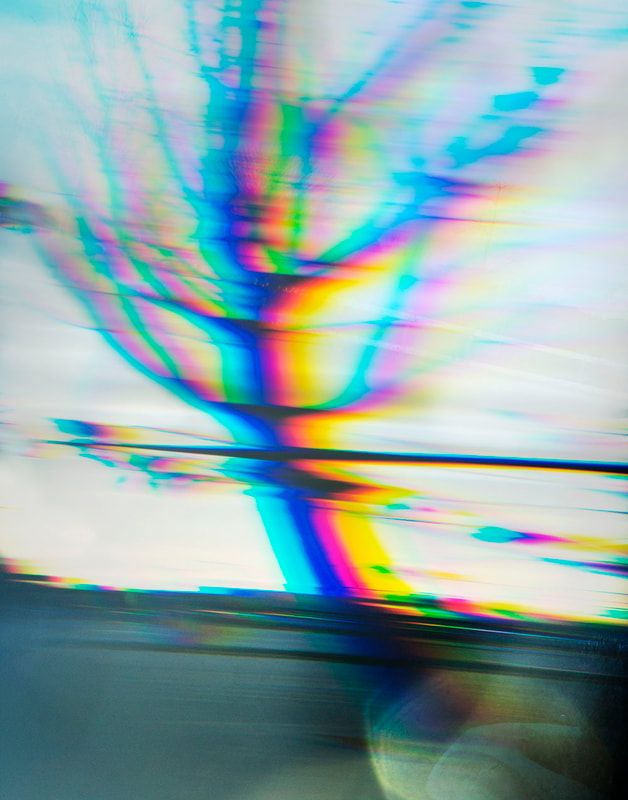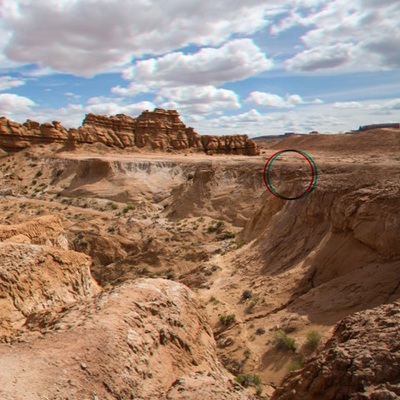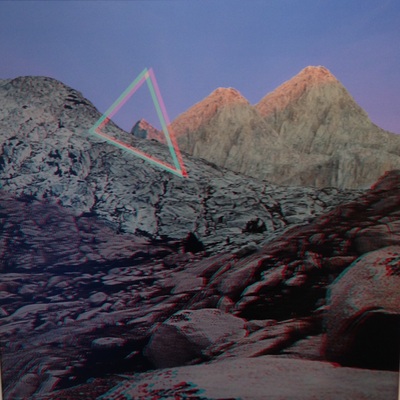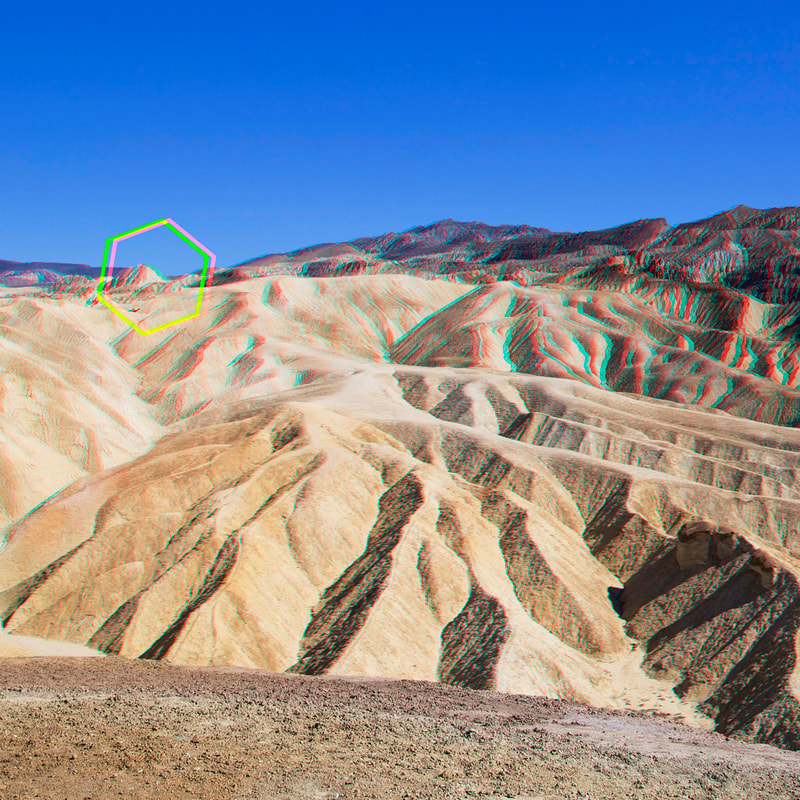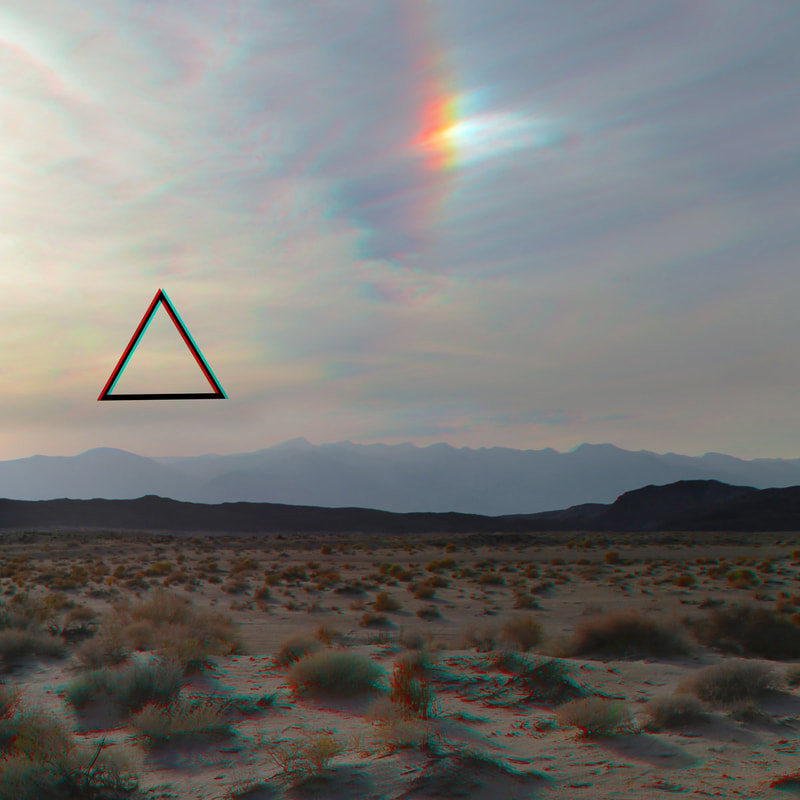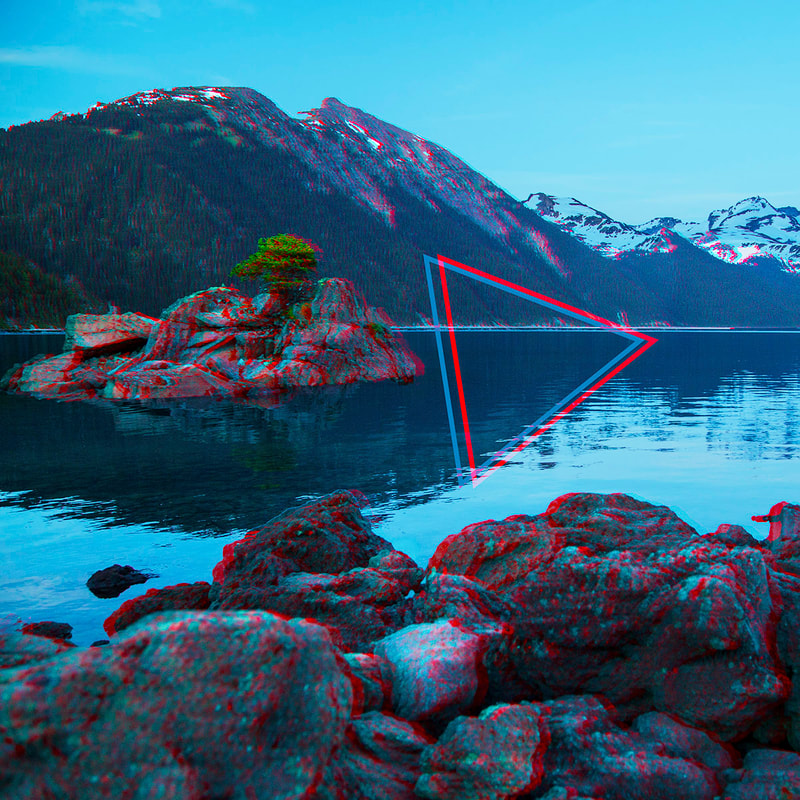Annie Briard
b. in Montreal, Quebec. lives and works in Vancouver, BC.
CV
Annie Briard (BFA, MFA) is a Canadian artist known for her practice in expanded photography and digital media. Her work challenges how we make sense of the world through visual perception. Creating lens-based and light-focused works, she explores the intersections between perception paradigms in psychology, neuroscience and existentialism.
Her moving images, media installations, expanded and print photography have been presented in numerous solo exhibitions, including “Staring at the Sun” at La Bande vidéo for the Quebec Biennale (Québec, 2022), “Within the Eclipse” at the Burrard Arts Foundation (Vancouver, 2021), "Second Sight” at AC Institute (New York, 2019), "Sight Shifting" at Joyce Yahouda Gallery (Montréal, 2014), as well as group shows, festivals and fairs internationally at the Vancouver Art Gallery, Art Mûr (Montréal), Three Shadows Photography Centre (Beijing), the Lincoln Film Centre New York, Matadero Madrid, the Switzerland Architecture Museum, among many others. Recently, she presented monumental scale photographic and moving-image public art projects for a number of commissions in Canada. She has been artist-in-residence at SIM in Reykjavik, the Banff Centre for the Arts, Eastside Los Angeles and others. Annie Briard’s work has received support from the Canada Council for the Arts, the British Columbia Arts Council and the Social Science and Humanities Research Council of Canada, and is found in the collections of Microsoft, Scotiabank, Caisse de Dépôt et Placement du Québec, Polygon and others.
Briard is a Lecturer in photography and media arts at Emily Carr University of Art + Design.
CV
Annie Briard (BFA, MFA) is a Canadian artist known for her practice in expanded photography and digital media. Her work challenges how we make sense of the world through visual perception. Creating lens-based and light-focused works, she explores the intersections between perception paradigms in psychology, neuroscience and existentialism.
Her moving images, media installations, expanded and print photography have been presented in numerous solo exhibitions, including “Staring at the Sun” at La Bande vidéo for the Quebec Biennale (Québec, 2022), “Within the Eclipse” at the Burrard Arts Foundation (Vancouver, 2021), "Second Sight” at AC Institute (New York, 2019), "Sight Shifting" at Joyce Yahouda Gallery (Montréal, 2014), as well as group shows, festivals and fairs internationally at the Vancouver Art Gallery, Art Mûr (Montréal), Three Shadows Photography Centre (Beijing), the Lincoln Film Centre New York, Matadero Madrid, the Switzerland Architecture Museum, among many others. Recently, she presented monumental scale photographic and moving-image public art projects for a number of commissions in Canada. She has been artist-in-residence at SIM in Reykjavik, the Banff Centre for the Arts, Eastside Los Angeles and others. Annie Briard’s work has received support from the Canada Council for the Arts, the British Columbia Arts Council and the Social Science and Humanities Research Council of Canada, and is found in the collections of Microsoft, Scotiabank, Caisse de Dépôt et Placement du Québec, Polygon and others.
Briard is a Lecturer in photography and media arts at Emily Carr University of Art + Design.
|
Annie Briard | Edit and design: Monica Reyes Gallery, 2021 ISBN: 978-1-7777401-0-8 Available for purchase here |
New Works from the In Possible Lands Series, 2023
Past Exhibition
Superlucent | All the Colour You Cannot See
June 11 - July 9, 2022 | Mackenzie Heights
Installation view "Superlucent | All the Colour You Cannot See" with daylight and at nighttime
works: Sun Simulations III (2022), Sun Simulations IV (2022) and Sun Simulations II (2022)
works: Sun Simulations III (2022), Sun Simulations IV (2022) and Sun Simulations II (2022)
Being situated at the horizon is a constant impossibility and with each movement we make toward it, it slips further away again. It is a place that can be looked out to and perceived at a distance, but a place that can never be reached. Where the horizon exists in our visual and atmospheric field is an end point to our perception of the immediate space around us, a meeting point of earth and sky, and a false idea of limits. So how do we expand our horizons, and in the case of Annie Briard’s work, how do we reimagine our visual fields and find the ability to see beyond them? Annie Briard’s current exhibition “Superlucent: All the Colour You Cannot See” brings to Mónica Reyes Gallery a series of her colour-changing photographs that play with the limits of our perceptual experience while also highlighting how a limitation may be transformed into expansion when we attune to minute shifts in our environment.
Through the glowing, shifting photographs included in this exhibition, Briard calls out to us as viewers, to open up to expanding our sensual experience. Instead of the impossibility of reaching a particular place and seeing what is truly there, Briard’s colour-changing photographs invite those of us who are looking and seeing to notice little shifts that reveal the immanent possibilities of each moment. Something new is always ready to reveal itself to those ready to wait. Each time we look away from her works, believing we’ve had the full experience, we’ll be surprised to look back and see the photograph has once again changed. Briard’s works are elusive and they keep slipping out of our grasp, asking us to relish in humble moments of unknowing.
Through the glowing, shifting photographs included in this exhibition, Briard calls out to us as viewers, to open up to expanding our sensual experience. Instead of the impossibility of reaching a particular place and seeing what is truly there, Briard’s colour-changing photographs invite those of us who are looking and seeing to notice little shifts that reveal the immanent possibilities of each moment. Something new is always ready to reveal itself to those ready to wait. Each time we look away from her works, believing we’ve had the full experience, we’ll be surprised to look back and see the photograph has once again changed. Briard’s works are elusive and they keep slipping out of our grasp, asking us to relish in humble moments of unknowing.
|
|
|
Time-lapse of the colour-changing lightbox "Simulated Suns III" and "Simulated Suns II" by Annie Briard.
When entering the Mónica Reyes Gallery and immersing ourselves in the glowing lights and shapes, we may feel a pull to hushed reverence while viewing Briard’s work. Briard borrows from a recent history of modernist painters and artists, most of whom were white men, who seemed to have cornered the market in western art histories on perceptual play and the interaction of shapes and colours. To produce a new way of looking, Briard inserts her work into this history by repurposing colours and shapes and pushing the project of perception further along by activating her works with new elements. Briard subverts the idea of finality, as there is always something new to see, something else to unpack, some experience that is missing and when we open to new possibilities, we open to the entire story shifting again. Annie Briard’s “Superlucent: All the Colour You Cannot See” at Mónica Reyes Gallery invites us to be curious and open to what we don’t know and what we may never know.
Annie Briard speaking about the works exhibited in "Superlucent: All the Colour You Cannot See" at Monica Reyes Gallery
Horizon RGB Series
In Possible Lands series
All THE LIGHT YOU CANNOT SEE
Capture Photography Festival and Mónica Reyes Gallery | online exhibition
Spring 2020
All the Light You Cannot See presents multidisciplinary artist Annie Briard’s latest exploration into the poetics of vision. The work presented in this solo exhibition take up additive and subtractive colour and light waves revealing the visible spectrum through photographic processes and modes of display.
Inspired by the fiery skies of the western coasts, and the starkness of the desert landscape, the celestial representations evoke the romanticized image of sunsets, science fiction atmospheres, and the Aurora Borealis. With shifting ecologies, and environmental changes that seem at once imperceptible and extreme, the perception and sensation produced by Briard’s new series bring to mind a desire to see, a comfort in return, and the passivity of beauty.
Colour-shifting horizon lines and skyscapes are artificially produced using photographic images and programmed LED lightboxes, and celluloid projections blur and expand the definitions of natural light. Briard’s interest in our perception of light, colour, and the natural environment manifests as cyclical, shifting, meditative colour fields, as viewers bathe in a glow of past, present, and future. The colours that shift become just a memory, or capacity of vision. As the cycles unfold, knowing is undone, and perception begins.
Supported by a Tricera Printing Grant.
Inspired by the fiery skies of the western coasts, and the starkness of the desert landscape, the celestial representations evoke the romanticized image of sunsets, science fiction atmospheres, and the Aurora Borealis. With shifting ecologies, and environmental changes that seem at once imperceptible and extreme, the perception and sensation produced by Briard’s new series bring to mind a desire to see, a comfort in return, and the passivity of beauty.
Colour-shifting horizon lines and skyscapes are artificially produced using photographic images and programmed LED lightboxes, and celluloid projections blur and expand the definitions of natural light. Briard’s interest in our perception of light, colour, and the natural environment manifests as cyclical, shifting, meditative colour fields, as viewers bathe in a glow of past, present, and future. The colours that shift become just a memory, or capacity of vision. As the cycles unfold, knowing is undone, and perception begins.
Supported by a Tricera Printing Grant.
Annie Briard | Staring at the Sun
Solo show at La Bande Vidéo | Quebec Biennale
February - April 2022
Staring at the Sun, solo exhibition at La Bande Video for Manif d’art Quebec Biennale, 2022. Photo by Ricardo Savard
Staring at the Sun calls up the old adage, inviting viewers to risk blindness by prolonging their gaze. In a dark room, an enigmatic projection appears on a wall in front of two chairs. As the disc-shaped projection moves through the chromatic spectrum of visible light, the blinding strength of the sun it represents seems to be subdued, its constitutive colours broken down and compartmentalized. Nevertheless, the device triggers an unexpectedly complex psycho-emotional phenomenon. The installation is supported by low-frequency ambient audio, which Briard has specifically designed to arouse somatic responses, using a frequency discovered by NASA that is often associated with paranormal apparitions because it causes the iris to vibrate, potentially provoking visual hallucinations. Contributing to the immersive experience is a second sound reverberating in the space, this one based on the theta rhythm, which is used in neurological research to activate organic visual functions. The device produces lingering images, illusions of movement and chimeric colours in the spectators’ minds. Briard blurs the line between the tangible and the imaginary, drawing our attention to the conjectural instability of perception.
We acknowledge the support of the Canada Council for the Arts.
canadacouncil.ca
We acknowledge the support of the Canada Council for the Arts.
canadacouncil.ca
Staring at the Sun (HD video projection with surround sound, acrylic form, LED lighting) | Annie Briard | installation demo
We can never fully see the sun. The most constant object in our field of view, and that which indeed allows the very possibility of vision, is visually unobtainable.
How much of what we see is actual? How much is fabricated? Staring at the Sun poses these questions through an immersive experience in which we are asked to consider the visible spectrum. Here, color is both perceived and produced by the body and mind. What we see reflects at once the light of the rainbow and its negative. The limits between the tangible and the imagined collapse into a dizzied blur of color and invisibility.
How much of what we see is actual? How much is fabricated? Staring at the Sun poses these questions through an immersive experience in which we are asked to consider the visible spectrum. Here, color is both perceived and produced by the body and mind. What we see reflects at once the light of the rainbow and its negative. The limits between the tangible and the imagined collapse into a dizzied blur of color and invisibility.
ANNIE BRIARD | Within the Eclipse
BURRARD ARTS FOUNDATION
January 19, 2021 - March 20, 2021
Prolonged exposure creates a sense of disconnect: staring too long, repeating words, looping audio. Repeating the same word again and again, it becomes meaningless, a phenomenon known as semantic satiation. Annie Briard examines this disorientation in the realm of vision, contending with the fallibility of human senses and the malleable nature of perception through images and light-based installations that create subtle rifts in what we think we see. By encouraging us to look longer, more deeply, and from a different stance, Briard’s work creates fertile dissonance, where the concreteness of reality begins to melt away.
Briard’s work can be succinctly defined by two interrelated principles: colour and light. Photography, a medium she’s often worked in, is perhaps more governed by light than any other. In her photographic work, the subjectivity of vision often shows up as trippy maximalism; saturated colours, chopped-up landscapes, double- or triple-vision. But the work produced in her Burrard Arts Foundation residency is almost minimal; light-based sculptural installation that immerses the viewer in a first-hand experience, rather than recreating a distorted one in two dimensions.
In The Glow of Two-Thousand Moons, Briard placed three analog slide projectors inside monolithic plinths. The projectors cycle through a series of 80 slides, all images of the clear, daylit sky shot by Briard using colourful cinema gels (transparent, tinted material used to create lighting effects in film). Working with seven shades of gels, Briard mixed and layered them to create countless variations and tones, a nod to the fact that just three colours combine to create the limitless spectrum of hues we see. The plinths create an overlapping, circular projection reminiscent of the theater of the heavens, constantly shifting and cycling through a predetermined rhythm. Briard asks us to consider how our own perception could be seen to act as another gel, or filter, shading our vision and altering reality. The cyclical projection also evokes the stages of the moon, itself a blank canvas coloured by human subjectivity. Fittingly, while we perceive the moon to be white, it actually shifts in colour depending on the circumstances through which we perceive it, such as atmospheric elements and telescope positioning.
Our understanding of the physical world, then, is forever distorted. But increasingly, it takes an even more altered form; the simulated. As weeks of social isolation have turned into months, a staggering amount of interaction comes to us through a screen. Briard’s work has existed at the edge of perception for almost a decade, but this past year, more of us than ever have become hyper-aware of the uncomfortably constructed nature of experience.
Light is the supreme controller of how we see, directly and through infinite interactions with the elements that surround us. With Horizon Lightboxes, Briard presents the viewer with a lightbox image of the horizon, forever changing colours like a mood ring. These protean images bring to mind the way memory is constantly open to interpretation and coloured by circumstance. In the moment, too, reality constantly shifts and bends, like light refracted through a prism—see the phrase “rose coloured glasses.” Colour, light, and the inner world all combine to create their own unique hue that overlays our vision.
Finally, with Sun Simulations, Briard continues her preoccupation with light and subjectivity, with an added meditation on the digitization of human experience. Consisting of a contemporary, color-changing kinetic “stained glass window,” this most developed during her residency at BAF simulates the effect of sunlight streaming through a window. A video projection accompanies the lightbox to mimic solar beams coming through the panes of glass. With these works, Briard contemplates what effect it might have to simulate the sun, the most vital element of our universe. In Medieval cathedrals, stained glass windows were designed to communicate the sublime—in Briard’s hands, the most basic element of the natural world, the light of the sun, becomes a thing of wonder, akin to a spirit or a higher power. Such is the disconnect between the natural world and the average person. As with Horizon Lightboxes and The Glow of Two-Thousand Moons, so too does The Light of the Cosmos incorporate slowly shifting coloured lights designed to explore colour perception and mimic the ways in which natural light affects our interpretation of color.
The throughline of Briard’s work is how perception differs. Between individuals, each bringing their own biases and context to what they experience, the same scene can evoke an infinite array of moods and memories. No matter how earnestly we ignore our senses’ fallibility, it has a way of creeping in; blurred vision, wavering outlines, halos and auras brought on by the mutability of our consciousness and our shifting environment. For Annie Briard, human experience is delicate and fluid – in a sense, its own form of artistic expression.
Text by Meredyth Cole and Genevieve Michaels, Burrard Arts Foundation
Image credit: Burrard Arts Foundation
ANNIE BRIARD at Queen's University, Union Gallery (Kingston)
SECOND SIGHT
March 2 - April 30, 2021
Imagine you’re driving through the hot desert passing by the same landscape of trees. The sun is glaring through the window and your mind wanders off as your surroundings become more and more hazy. How do you know you’re seeing trees? Is it light that reflected off the trees, entered your eyes, and created the image in your brain? Could it be your psychological desire that materialized the trees? We depend so much on our visual perception to interpret our surroundings, and yet our visual perception is fallible and deceptive. As much as we gain knowledge about the world from the visual, our knowledge of vision remains puzzling.
Annie Briard’s solo exhibition Second Sight reflects on the problematics of perception by taking the viewer on a road trip through the high desert, where the seen eventually breaks apart and the limits between physical reality, head trips and visions from beyond become blurred. Joshua Tree is seen through disused military optics or prisms, responding to an ancient theory claiming that we see the world as a result of minuscule crystals within our eyes. As military optics frame perspectives towards specific ends, so too might the eye and its crystalline components. The exhibition presents a video installation alongside sculptural holograms and sound.
Curatorial Assistant: Jung-Ah Kim
Installation Team: Cory Benn and Carina Magazzeni
Annie Briard’s solo exhibition Second Sight reflects on the problematics of perception by taking the viewer on a road trip through the high desert, where the seen eventually breaks apart and the limits between physical reality, head trips and visions from beyond become blurred. Joshua Tree is seen through disused military optics or prisms, responding to an ancient theory claiming that we see the world as a result of minuscule crystals within our eyes. As military optics frame perspectives towards specific ends, so too might the eye and its crystalline components. The exhibition presents a video installation alongside sculptural holograms and sound.
Curatorial Assistant: Jung-Ah Kim
Installation Team: Cory Benn and Carina Magazzeni
ANNIE BRIARD at Foreman Art Gallery of Bishop's University, Quebec
VIDEOTANK #22: LANDSCAPE, CUTOUT
October 1, 2020 - March 20, 2021
Landscape, Cutout emphasizes the constructedness of reality or the world surrounding us, and vision’s sometimes problematic role within this construction. In this particular work, a still image is crudely cut up to form arbitrary divisions in our view of the landscape. Using the screen’s light to brighten individual cutouts at varying intervals, the landscape can be seen to subtly change in perspective. As the moving image transforms slowly over time, only memory can reveal its lack of fixity and ever going shift.
To see the full virtual tour of Annie Briard's work and other current exhibitions at Foreman Art Gallery, click here.
To see the full virtual tour of Annie Briard's work and other current exhibitions at Foreman Art Gallery, click here.
Annie Briard | In Possible Lands
Outdoor Installation at Art Gallery at Evergreen
May 2020 - July 2020
In Possible Lands (2020) pairs superimposed photographs of the landscape—one captured 45 years ago by the artist’s father, and the other a present-day image taken by Annie Briard—that together evoke a sense of wonder with their vivid colours and majestic yet familiar subjects. But examined up close, they reveal a world altered by human action.
|
ANNIE BRIARD
shares her thoughts about the COVID-19 situation from Vancouver, BC. March 26, 2020 |
|
PAST EXHIBITIONS at Mónica Reyes Gallery (formerly Back Gallery Project)
Paracosmic Sun | 2017
What we see of the world results from a complex interplay of unstable systems. Vision is a wondrous affair, navigating the line between acts of deciphering and of creating. Our perceived surroundings are a collection of images formed through the intricate workings of our senses, and the impressions prescribed by mood, memory and so much more.
There is no fixed reality; it is a product of myriad conditions, which at times conflict. Vast knowledge can be derived from sight, but is it ever the same for us all? From one instance to another? How much of what we see is actual? How much is fabricated?
Staring at the Sun poses these questions through an immersive experience in which we are asked to consider the visible spectrum. Here, colour is both perceived and produced by the body and mind. What we see reflects at once the light of the rainbow and its negative. The limits between the tangible and the imagined collapse into a dizzied blur of colour and invisibility.
There is no fixed reality; it is a product of myriad conditions, which at times conflict. Vast knowledge can be derived from sight, but is it ever the same for us all? From one instance to another? How much of what we see is actual? How much is fabricated?
Staring at the Sun poses these questions through an immersive experience in which we are asked to consider the visible spectrum. Here, colour is both perceived and produced by the body and mind. What we see reflects at once the light of the rainbow and its negative. The limits between the tangible and the imagined collapse into a dizzied blur of colour and invisibility.
The Constructions Series | 2015
Re-envisioning vision. Exploring the boundaries between the physical and the imagined, the perceived, and the misperceived. Constructions uses landscapes as structures through which to investigate and pull apart these territories of sight. What we see is constantly in transformation. The scene before us changes with the faded recollection of what was experienced seconds ago. Beyond how the mind transforms what is understood as actual, the body itself manipulates sight. Vision can only reveal what has already been. Blind spots speckle our field of view and afterimages happen every split second but we cancel them out. What else is hidden?
I create these stereoscopic photographs from backpacking trips to investigate our inability to accurately grasp the world. These images confront us with paradoxical vision. First, there is the flat, colorful image of a wondrous place. Then, with glasses on, there is red, or blue, if one eye is shut. The combined 3D image shows a fourth perspective where the scene’s planes appear to jut outwards or recede behind the photographic surface. There are others if we focus on the geometric symbols pointing to where the construct breaks down. How can one image be perceived in all these ways?
Through this series, I explore what drives me ever onwards: how does what I see compare to what you see? How much does vision make our worlds stray from each other’s? Why is the seen prioritized over the daydreamed, the imagined, when sometimes they can be so alike?
I create these stereoscopic photographs from backpacking trips to investigate our inability to accurately grasp the world. These images confront us with paradoxical vision. First, there is the flat, colorful image of a wondrous place. Then, with glasses on, there is red, or blue, if one eye is shut. The combined 3D image shows a fourth perspective where the scene’s planes appear to jut outwards or recede behind the photographic surface. There are others if we focus on the geometric symbols pointing to where the construct breaks down. How can one image be perceived in all these ways?
Through this series, I explore what drives me ever onwards: how does what I see compare to what you see? How much does vision make our worlds stray from each other’s? Why is the seen prioritized over the daydreamed, the imagined, when sometimes they can be so alike?
Annie Briard | Wanderings | 2013
Standing isolated in a forest full of towering trees with tiny agile creatures scurrying between your feet, suddenly you happen upon another face. Wanderings is an exploration of the embodiment of perception, reality, time and place.
Focusing on our environmental relationships, Annie Briard produces open-ended fables within fantastical universes as personal experiences for the viewer. Her works are created through diverse media but focus on utilizing the moving image as a means to blur the distinction between reality and perception.
Wanderings marks Briard's first solo exhibition of work in Vancouver. Featured within the exhibition is her interactive stop-motion animation, The Woods (2012), a work that affords you the chance to speak with it only as much as it speaks back at you. In ‘choose your own adventure’ style, viewers communicate with the main character Cecilia, through text messages and movement, prompting different surrealist inspired fable-like narrative moments and actions. Through its playfulness and unique aesthetic, the work questions the limits between dream and reality, human made worlds and nature, and structures of communication and domination. The Woods will subsequently be touring across Canada at Centre 3 (Hamilton), Joyce Yahouda Gallery (Montreal), and VIVO Media Arts Centre (Vancouver).
View interaction documentation: http://vimeo.com/51083771
Focusing on our environmental relationships, Annie Briard produces open-ended fables within fantastical universes as personal experiences for the viewer. Her works are created through diverse media but focus on utilizing the moving image as a means to blur the distinction between reality and perception.
Wanderings marks Briard's first solo exhibition of work in Vancouver. Featured within the exhibition is her interactive stop-motion animation, The Woods (2012), a work that affords you the chance to speak with it only as much as it speaks back at you. In ‘choose your own adventure’ style, viewers communicate with the main character Cecilia, through text messages and movement, prompting different surrealist inspired fable-like narrative moments and actions. Through its playfulness and unique aesthetic, the work questions the limits between dream and reality, human made worlds and nature, and structures of communication and domination. The Woods will subsequently be touring across Canada at Centre 3 (Hamilton), Joyce Yahouda Gallery (Montreal), and VIVO Media Arts Centre (Vancouver).
View interaction documentation: http://vimeo.com/51083771
